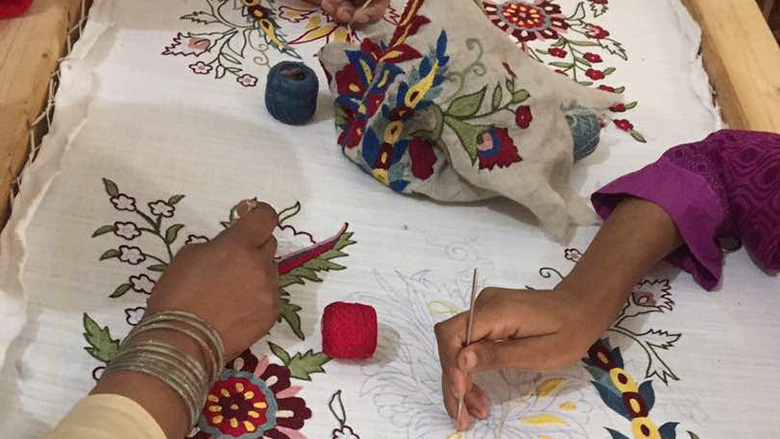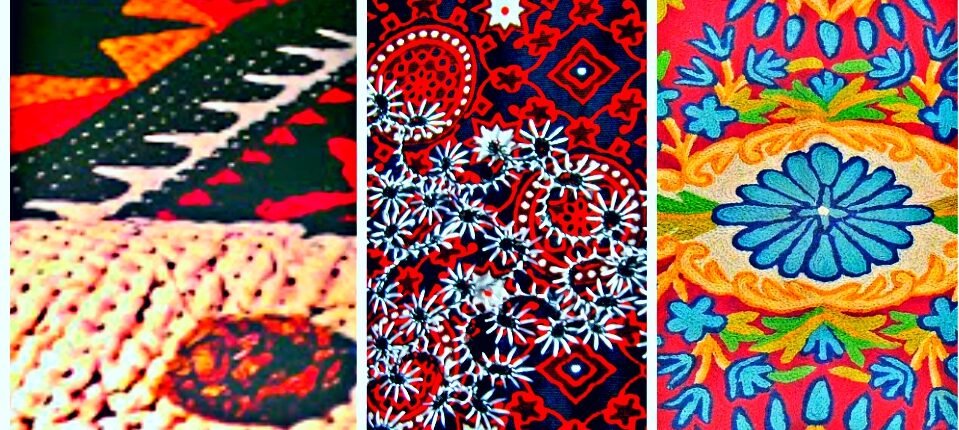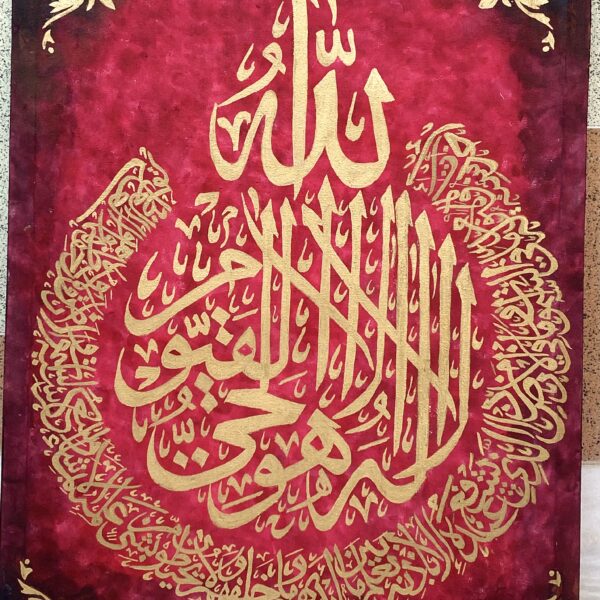Arts and Crafts
Introduction:

Pakistan's rich artistic heritage is a testament to its diverse cultural landscape, historical legacy, and centuries-old traditions of craftsmanship. From intricate textiles and exquisite pottery to vibrant paintings and mesmerizing calligraphy, Pakistani arts and crafts embody the creativity, skill, and cultural identity of its people. In this comprehensive exploration, we embark on a journey through the diverse realms of Pakistani arts and crafts, unraveling their historical roots, techniques, motifs, and contemporary significance.
Historical and Cultural Context:

The arts and crafts of Pakistan have deep historical roots, dating back to ancient civilizations such as the Indus Valley Civilization, Gandhara, and the Mughal Empire. These civilizations made significant contributions to art, architecture, and craftsmanship, influencing subsequent generations of artisans. Islamic art and culture have also played a pivotal role in shaping Pakistani arts and crafts, with the introduction of techniques such as calligraphy, miniature painting, and tile work. The patronage of Mughal emperors and Sufi saints further enriched the artistic traditions of the region.
Textiles and Embroidery:

a. Embroidery:
Pakistani embroidery is renowned for its intricate patterns, vibrant colors, and meticulous craftsmanship. Each region of Pakistan has its own distinct style of embroidery, reflecting local traditions, motifs, and techniques.
Examples of Pakistani embroidery include:
Sindhi embroidery:
characterized by colorful threadwork and mirror embellishments, often used in garments such as shalwar kameez and dupattas.Balochi embroidery:
known for its geometric patterns and use of bright colors, often seen in Balochi dresses and textiles.Phulkari:
a traditional embroidery technique from Punjab, featuring floral motifs and bright threadwork on fabrics such as shawls and scarves.b. Textile Arts:

Pakistani textiles encompass a wide range of fabrics, including cotton, silk, wool, and blends. Traditional techniques such as block printing, tie-dye (bandhani), and ikat weaving are still practiced by artisans across the country.
Ajrak and Sindhri:
traditional block-printed fabrics from Sindh, featuring intricate geometric patterns and natural dyes.Multani Khussa:
handcrafted leather shoes adorned with colorful threadwork and embellishments, originating from Multan in Punjab.Pottery and Ceramics:
Pottery and ceramics have a long history in Pakistan, with evidence of pottery-making dating back to the Indus Valley Civilization. Pakistani pottery is known for its diverse styles, techniques, and decorative motifs.Multan Blue Pottery:
characterized by its distinctive blue and white glaze, often featuring floral and geometric designs inspired by Islamic art.Hala Pottery:
traditional earthenware pottery from Hala in Sindh, known for its vibrant colors and intricate patterns, often used for decorative purposes and household items.Painting and Calligraphy:

a. Miniature Painting:
Miniature painting is a traditional art form that flourished under the Mughal and Persian empires, with Pakistan continuing the tradition to this day. Miniature paintings typically depict scenes from literature, mythology, and daily life, characterized by intricate detail and vibrant colors.
Themes:
Miniature paintings often depict themes such as courtly life, love stories (such as Heer Ranjha), and religious narratives (such as the life of Prophet Muhammad).b. Calligraphy:
Calligraphy holds a special place in Islamic art and culture, serving as a means of expressing religious texts and poetic verses with aesthetic beauty. Pakistani calligraphers employ various scripts, including Naskh, Nastaliq, and Thuluth, to create intricate designs and compositions. Qur'anic Calligraphy: Calligraphers often create intricate compositions of Qur'anic verses, surahs, and prayers, using techniques such as illumination and embellishment to enhance the beauty of the script.
Woodwork and Metalcraft:

a. Woodwork:
Pakistani woodwork encompasses a variety of techniques and styles, ranging from intricate carving to inlay work and lacquerware. Woodcarvers create decorative panels, furniture, and architectural elements adorned with geometric, floral, and figurative motifs. Kashmiri Walnut Woodwork: renowned for its intricate carving and detailed patterns, often used for furniture, boxes, and decorative items.
b. Metalcraft:
Metalcraft in Pakistan encompasses a wide range of techniques, including brass and copperware, silverwork, and jewelry making. Artisans utilize traditional methods such as hammering, embossing, and filigree to create intricate designs and patterns. Thatheras of Jandiala Guru: traditional brass and copper artisans from Punjab, known for their skill in crafting utensils, cookware, and decorative items using age-old techniques.
Contemporary Trends and Innovations:

While traditional arts and crafts continue to thrive in Pakistan, contemporary artists and designers are also exploring new techniques, materials, and themes to create innovative works of art.
Mixed Media Art:
Artists combine traditional techniques with modern materials and concepts to create eclectic artworks that reflect the complexities of contemporary Pakistani society.Digital Calligraphy:
Calligraphers are embracing digital tools and technologies to create dynamic and interactive calligraphic compositions, reaching new audiences and pushing the boundaries of the art form.Conclusion:
The arts and crafts of Pakistan are a vibrant reflection of its rich cultural heritage, diverse traditions, and creative ingenuity. From the intricate embroidery of Sindhi shawls to the timeless elegance of miniature paintings, Pakistani artisans continue to preserve and celebrate their cultural legacy while also embracing innovation and experimentation. As custodians of Pakistan's artistic heritage, artisans play a vital role in promoting cultural understanding, fostering creativity, and preserving the legacy of generations past for generations to come.